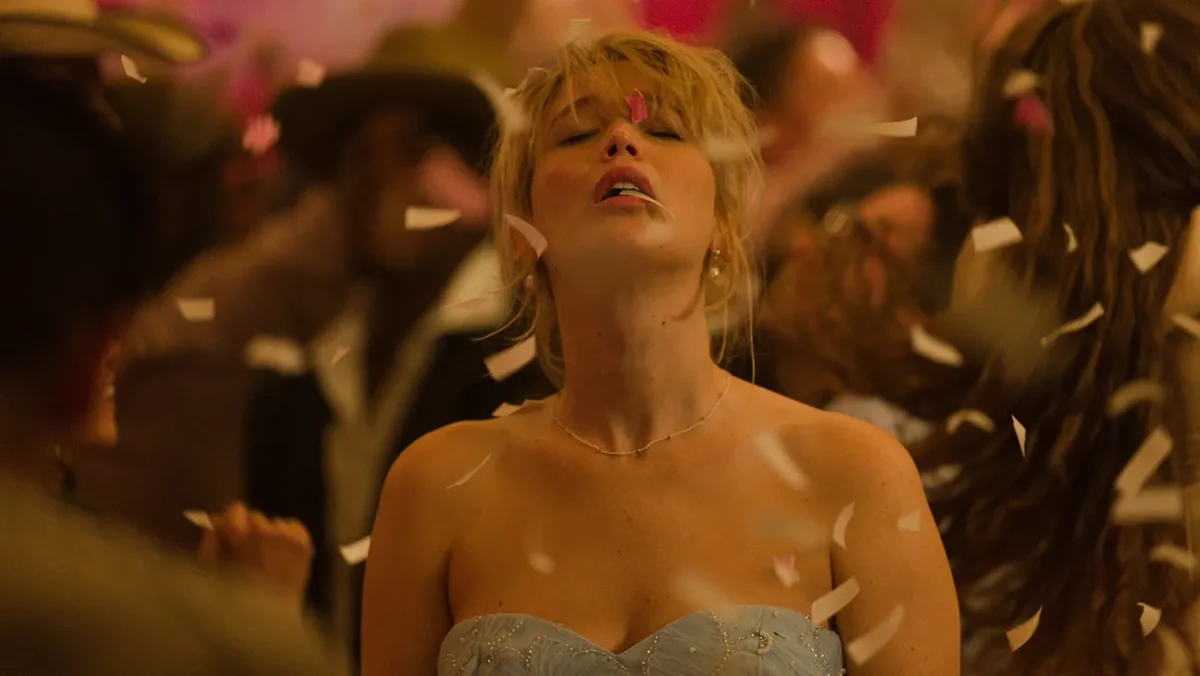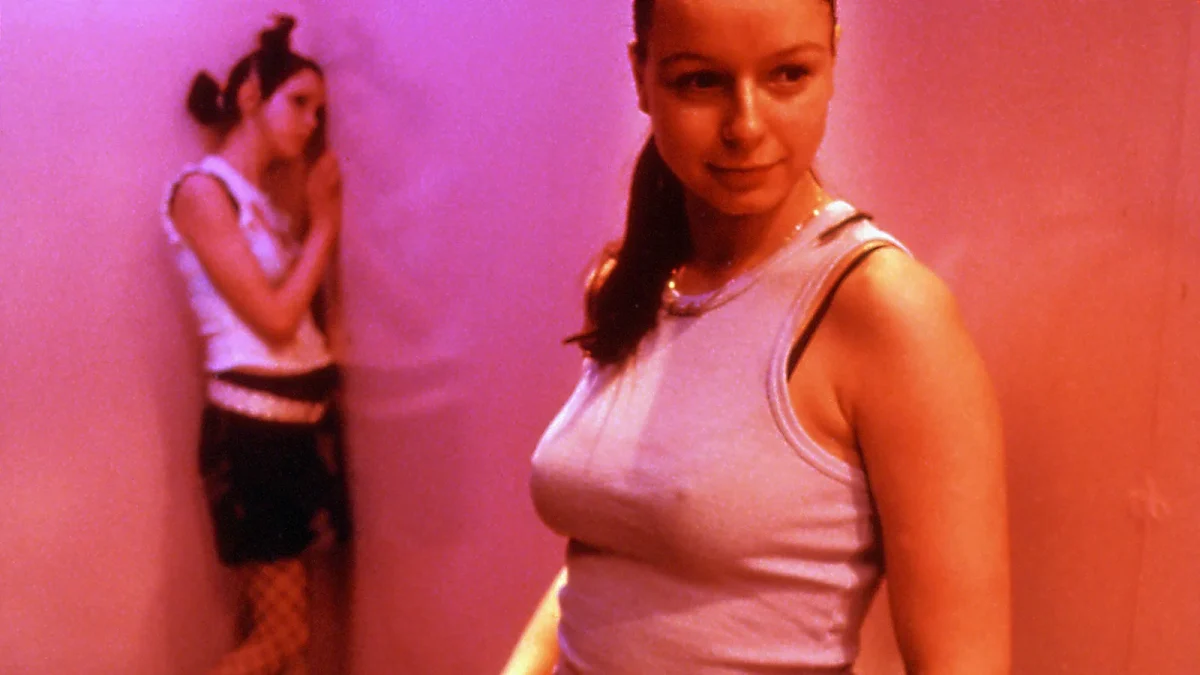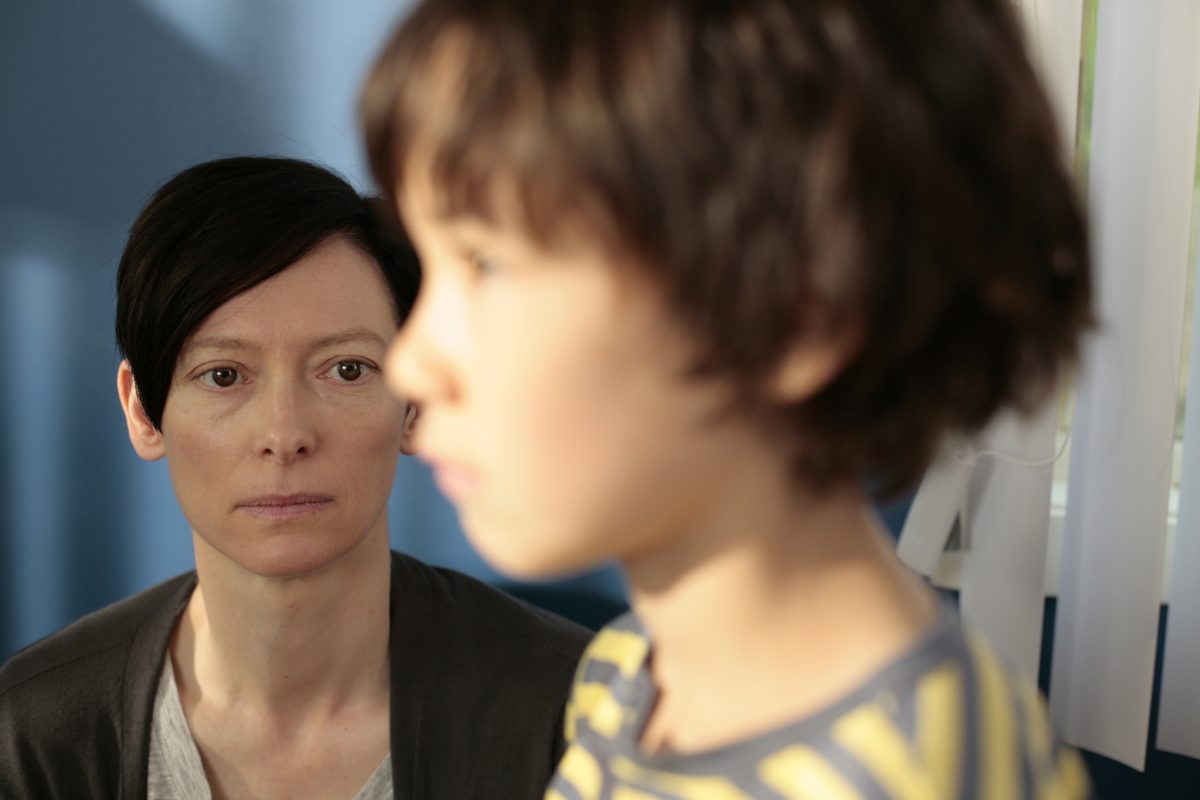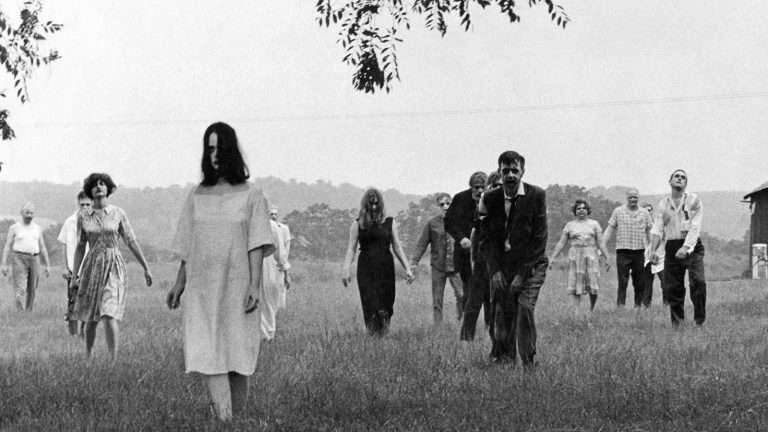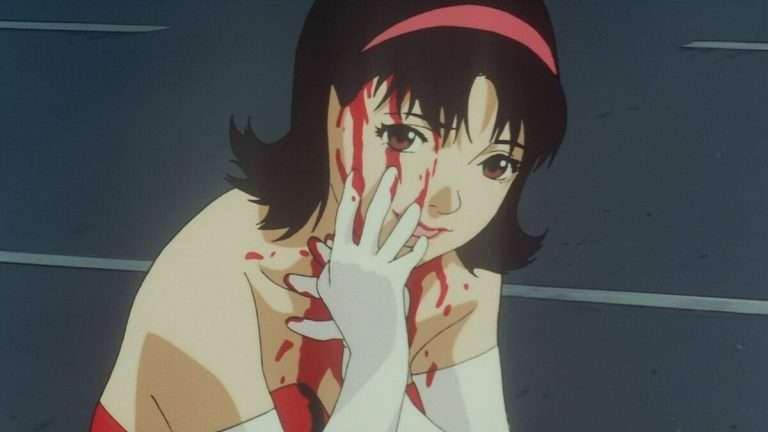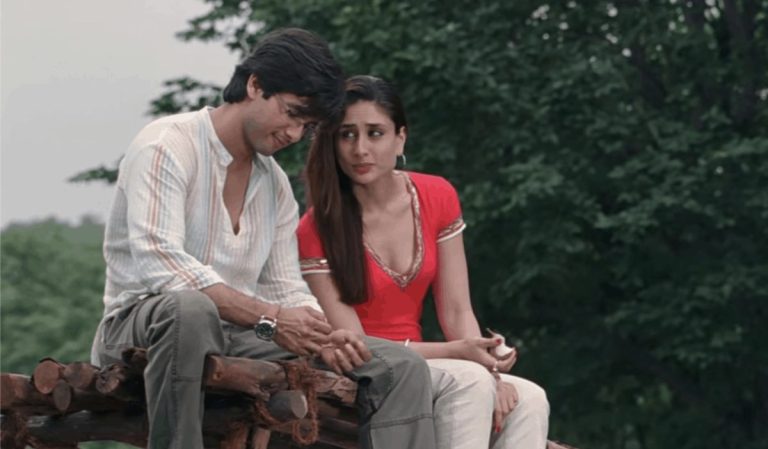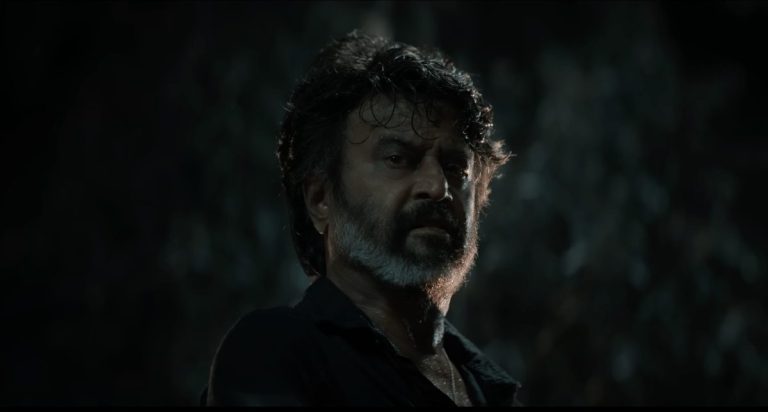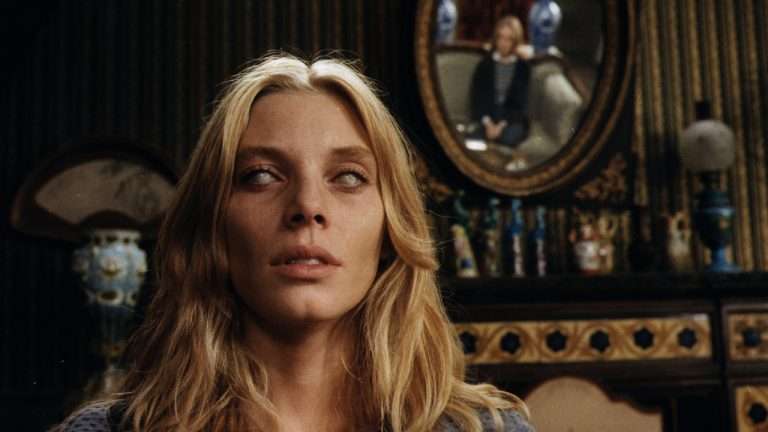Being a reader means being disappointed by film adaptations of books. The makers never seem to get it right, and to be fair, it is a tough nut to crack. I happened upon Lynne Ramsay’s work after reading Lionel Shriver’s “We Need to Talk About Kevin” (2003), which was adapted into a film of the same name by Ramsay in 2011. The viewing of it was burdened with heightened expectations because of all the critical acclaim the film had garnered, and more importantly, the source material, which I still consider to be one of the best books I have ever read. I was disappointed. An epistolary that thrived on reflections of a woman revisiting motherhood and her detached relationship with a son who grew into a mass murderer had been reduced to a film that wasn’t interested in words at all. This was before I wrote about films.
Ramsay’s adaptation, as films should be, and like all her films, is interested in the image above anything else. Followed by sound, then the characters, plot, and at the very end of the list are words. Took me a revisit to realise how efficient Ramsay is at taking a prosaic medium and turning it into meditative moving images. Purists have maintained that film is a visual medium, and this image must be of supremacy.
Even Tilda Swinton, who plays the travel writer with an exciting life turned detached mother, Eva Khatchadourian in “We Need To Talk About Kevin,” echoes, “cinema has gone downhill since people started talking in it.” Ramsay’s filmography is proof that she is likely to agree.
Right from her graduate film for NFTS; “Small Deaths” (1996), a short that explores the little deaths of innocence in childhood with each unkind encounter that lets reality slip in, up till her last film “You Were Never Really Here” (2018), Ramsay’s style has been a consistent evolution of grim, introspective visual storytelling about complex characters told through frames and sound design eager to cue you in more than the plot could.
A third revisit happened when I was trying to find words for an article published elsewhere about “We Need To Talk About Kevin” in conversation with Darren Aronofsky’s “Mother!” (2017) in their explorations of the detached and the devout mother, respectively. Of course, the idea germinated from Ramsay’s latest film, “Die, My Love” (2025), adapted from Ariana Harwicz’s Argentinian book of the same name about a woman’s postpartum descent into insanity, portrayed by Jennifer Lawrence, premiered at Cannes only a week after Mother’s Day! I have spent the whole of May revisiting Ramsay’s films, thinking and writing about her cinema. Here’s all her features ranked:
Special Mention: Gasman (1997)
“Gasman” (1997) is a short film that hits like a memory you didn’t know you were holding onto. With sparse dialogue and a tactile visual language, Ramsay constructs a world where warmth and unease sit uncomfortably close. Set during a seemingly ordinary Christmas party, the film quietly unspools the story of a young girl’s dawning realization that her father leads a double life.
What makes “Gasman” remarkable is its restraint—Ramsay doesn’t dramatize the betrayal; she lets it flicker across her young protagonist’s face, lets it hang in the air between crumpled wrapping paper and awkward glances. The camera lingers, not to explain, but to feel. There’s no exposition, no neat resolution, just a sense that something irreversible has shifted. It’s a deeply intimate portrayal of how childhood ends—not with a grand event, but with the quiet, painful clarity that adults are fallible, and the world is far messier than you were told.
5. Die My Love (2025)
Despite what many assumed to be a slam-dunk prediction by the time Juliette Binoche’s jury gave out their awards, Jennifer Lawrence was never going to win the Best Actress prize for “Die, My Love.” They just were simply never going to go with a choice that obvious with a name that famous; this is Cannes, not Venice! None of this is, by any means, an indictment on Lawrence’s turn in Lynne Ramsay’s depiction of marital collapse, as the star is an absolute hurricane storming through the screen and leaving nothing in her wake; motherhood is a beast, and Lawrence shows how it’s not a matter of slaying the dragon, but inhabiting it.
After an eight-year absence, Ramsay’s sensory cinema is back in full-force, heightening the subjectivity of her lead to turn “Die, My Love” into a chaotic descent to the depths of familial discord, all filtered through the mind of one woman (be it Ramsay or Lawrence’s Grace) who sees disruption as the only outlet for an honest expression of what this life can truly become. Perhaps, in that respect, somewhat messier than Ramsay’s other features, “Die, My Love” nonetheless breathes the same fire as them all, and proves a seismic showcase for all of its craftspeople pressing their faces gleefully against the window until it shatters.
Collaborator: Julian Malandruccolo
4. You Were Never Really Here (2018)

A traumatised boy forced to wear the skin of a war veteran who rescues girls from being trafficked finds purpose in correcting a rescue gone wrong. It’d be better to establish here that all Ramsay films are good films. Here’s an auteur who has found her artistic voice and isn’t afraid of using it. So, though fourth on the list, this is by no means a bad film. It, however, gets caught up in the — I won’t tell you what the film is, but each scene is a clue to the complete picture, i.e., the deeper meaning—structure that sure makes a Cannes-winning screenplay but ends up being a frustrating film.
However, there’s a lot the film offers to combat the frustration — a very convincing Joaquin Phoenix as a man capable of brute violence and moving empathy, surreal cinematography, subversion with off-screen violence in a very violent context, a great sound design and one of the best underwater sequences heavy with visual rapture and narrative meaning.
More Read: The 15 Best English Language Films of 2018
Collaborating the second time with editor Joe Bini, Ramsay is efficiently able to place a grown man and a scared boy in parallelly, embodied together, still struggling for a way out of trauma. He uses asphyxiation as an escape, first from a violent, wife-beater, scum father and then from the horrors he’d seen in the chosen line of work. The scenes sway between mind, memory, and moment, this fractured existence aligning for once when he finds purpose.
He’s been hired to rescue the senator’s daughter, and all that goes wrong makes the elusively interesting plot of the film. He finds the girl in a room in a brothel, lying supine on the bed, counting down to something. Perhaps a mechanism to escape the abuse she endures. A numb state of being our protagonist knows too well. A flimsy thread of connection that coerces him to a point of no return. This one is for a movie night with a company you enjoy solving films with and the conversations that happen in its wake.
3. Ratcatcher (1999)
I read somewhere that the critic Lizzie Francke describes Ramsay’s cinema as where social meets surreal. Instantaneously jealous that I hadn’t thought of such a fittingly succinct description, I vowed to outdo Francke by the time I was done writing this. I admit defeat, at least when it comes to Ramsay’s accomplished debut, “Ratcatcher” (1999).
With the cinematographer Alwin H. Küchler, whom she’d continue to collaborate with for a long time, Ramsay turns the camera on the deplete housing settlement in Glasgow, overflowing with uncollected trash bags during the garbage collector’s strike and the impoverished families waiting to be relocated. Our eyes and ears in this world and a couple others inhabited by confused preteen boys are James Gillespie (William Eadie), who lives with a mother who does what she can, an occasionally abusive alcoholic father, a distant older sister, and a jubilant younger sister.
In this setting chosen to make social commentary plays out the surrealist narrative of a young boy’s curiosities, hopes, dreams, griefs, and ghosts. Ramsay takes us from a drowning in the canal to a mouse tied to a balloon floating toward the sky, and neither feels more or less real than the other. The magic of “Ratcatcher” is that it doesn’t differentiate between reality and imagination—it understands, like childhood does, that the line between the two is porous.
The film begins with the arresting frame of Jamie’s head draped in a twisted white curtain, an image that becomes a reappearing motif in “You Were Not Really Here” — the exhilaration of spinning out of it is a twirl away, so is the danger of suffocation that must have haunted our mothers when we did this as a child. His mother’s hand enters the frame in the form of a slap on his curtained head, easing the tension. I had forgotten I did that as a child, twirling in circles to dissolve whole into the curtain. That is what “Ratcatcher” does, it reminds you of a time you’ve lived but forgotten, feel grateful that it wasn’t as grim as it is for Jamie, and ponder on the life-shaping consequences of an accident that is as random as birth.
2. Morvern Callar (2002)
Adapted from Alan Warner’s 1995 novel about and called Morvern Callar (Samantha Morton), a 20-something supermarket worker who finds herself presented with an opportunity to go from being a nobody to somebody (with money and possibly fame). It’s a rather morbid situation, her boyfriend has died by suicide, leaving her with a book manuscript, directions to send it to a list of publishers, and a plea to not try and understand why he did what he did. Dying seemed the right
thing to do. Morvern partly abides — she doesn’t pull her hair trying to make sense of it. Instead, she skips the first four stages of grief straight to acceptance and moves on. I love a story that presents an extreme scenario and takes the most unexpected, almost unimaginable turn. If it is done the Ramsay way, even better.
In her first adapted screenplay streak that remains unbroken, Ramsay follows Morvern’s avoidance of grief and pragmatism of choosing to move on. Can one see death and remain untouched? What do we owe the dead? The questions linger in the series of events as Morvern runs towards a lie till it turns into the truth. Fake it till you make it, they say. The yardstick for a good adaptation is how faithful it is to the source material.
A mark of a great film is how convincingly it justifies why its story had to be told through cinema, rather than as a novel, a photograph, a dinner-table anecdote, or perhaps not told at all! Ramsay’s take on Morvern Callar succeeds in doing both, except for one slip – a frustratingly reductive take on female friendships.
Morvern’s ride or die, Lanna (Kathleen McDermott), who is her co-worker and only friend, accompanies her nearly every step of the journey. For the majority of it, they just laugh. One is expected to interpret the spontaneity and frequency of laughs as signifiers of a close, healthy, intimate friendship. Despite this, the film does leave a mark, deep enough to be second on this list.
1. We Need to Talk About Kevin (2011)
This Palme d’Or-competing film features Tilda Swinton in what is arguably a career-best performance as Eva Khatchadourian — I genuinely can’t imagine anyone else in this role. She plays the unfortunate mother of Kevin (Ezra Miller), a deeply disturbed teenager who becomes a mass murderer, seemingly pushed to the edge by the existential emptiness of suburban comfort and, more tragically, by a mother who doesn’t — or maybe can’t — love him the way he so desperately needs to be loved.
Eva refers to the day of the massacre simply as “that Tuesday” — cold, distant, clinical. It’s a way to compartmentalize the unthinkable. In the source novel by Lionel Shriver, this distancing is rendered through epistolary narration, letters written to Eva’s estranged husband, Franklin (John C. Reilly), as she tries to make sense of what went wrong.
Ramsay, however, doesn’t care for exposition or inner monologue. Her medium is mood. Emotion is externalized through image and sound: dissonant cuts, evocative sound design, and a relentless palette soaked in red tomatoes, jam, paint, blood — all signs that danger is simmering just beneath the surface. You’re not just told Eva is anxious and repulsed — you feel it, physically.
Read: The 10 Most Unsettling Movies You’ll Ever See
The film’s nonlinear structure mirrors Eva’s fragmented psyche. Past and present slide into each other with the disorientation of memory, trauma, and guilt. Ramsey uses abrupt visual contrasts — a serene moment of childhood laughter cutting suddenly to a cold prison visit, or domestic bliss interrupted by something grotesque — to keep the viewer unsettled, to deny narrative comfort. Swinton’s face becomes the film’s emotional canvas: she doesn’t speak much, but her every flinch, twitch, and blink deepens the psychological portrait of a woman quietly disintegrating.
What Ramsay lays bare is a woman failed by the myth of maternal instinct, who tries to love her son and keeps failing, or worse, never tries hard enough. Kevin, inheriting Eva’s sharp cynicism and none of Franklin’s blithe optimism, is a child born into a world already stripped of wonder. His acts aren’t about sadism so much as nihilism — a need to feel something, or at the
very least, to provoke her into feeling something. No child should have to go to such perverse, violent lengths to force love from a parent. In the end, “We Need to Talk About Kevin” is not a film about why a teenager would commit such horror — it’s about what happens when a woman doesn’t conform to the sanctified ideal of motherhood, and how society — and maybe she herself — won’t let her forget it.
In Conclusion
With “Die, My Love” on the horizon, Ramsay’s filmography feels like a trail of quiet detonations — stories about people cracking under pressure, about silence being louder than words, about moments where childhood ends and reality creeps in. Each film she makes is an excavation, digging into trauma, memory, and the fragility of the self with poetic precision.
Whether adapting novels or crafting original narratives, Ramsay knows that emotion lives not in exposition but in image, rhythm, and sound. If you are convinced enough to dive into her filmography, expect curtains, bathtubs, protagonists submerged in water, themes of death and grief, fractured realities, but most importantly, the inability to look away despite the discomfort.


